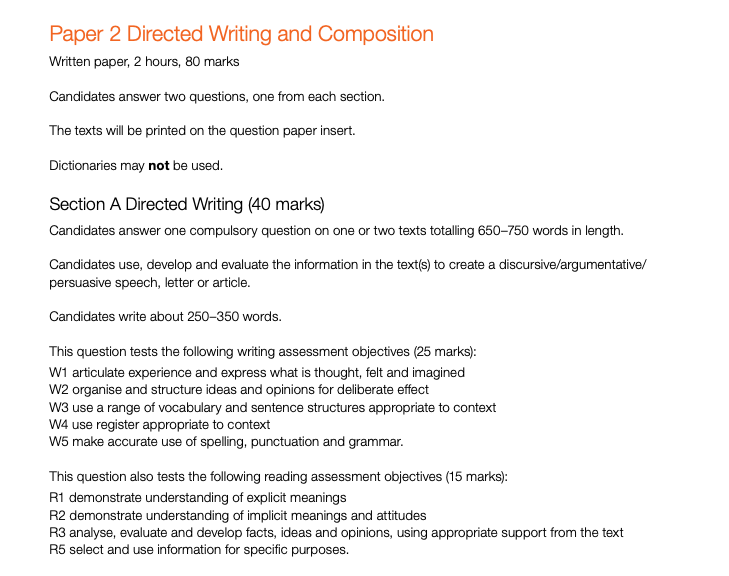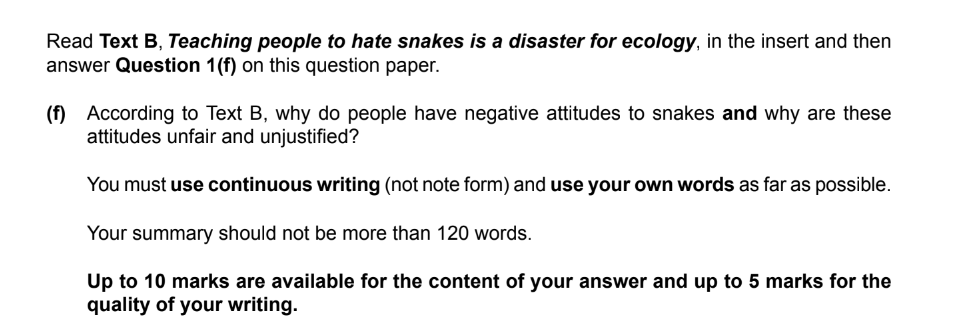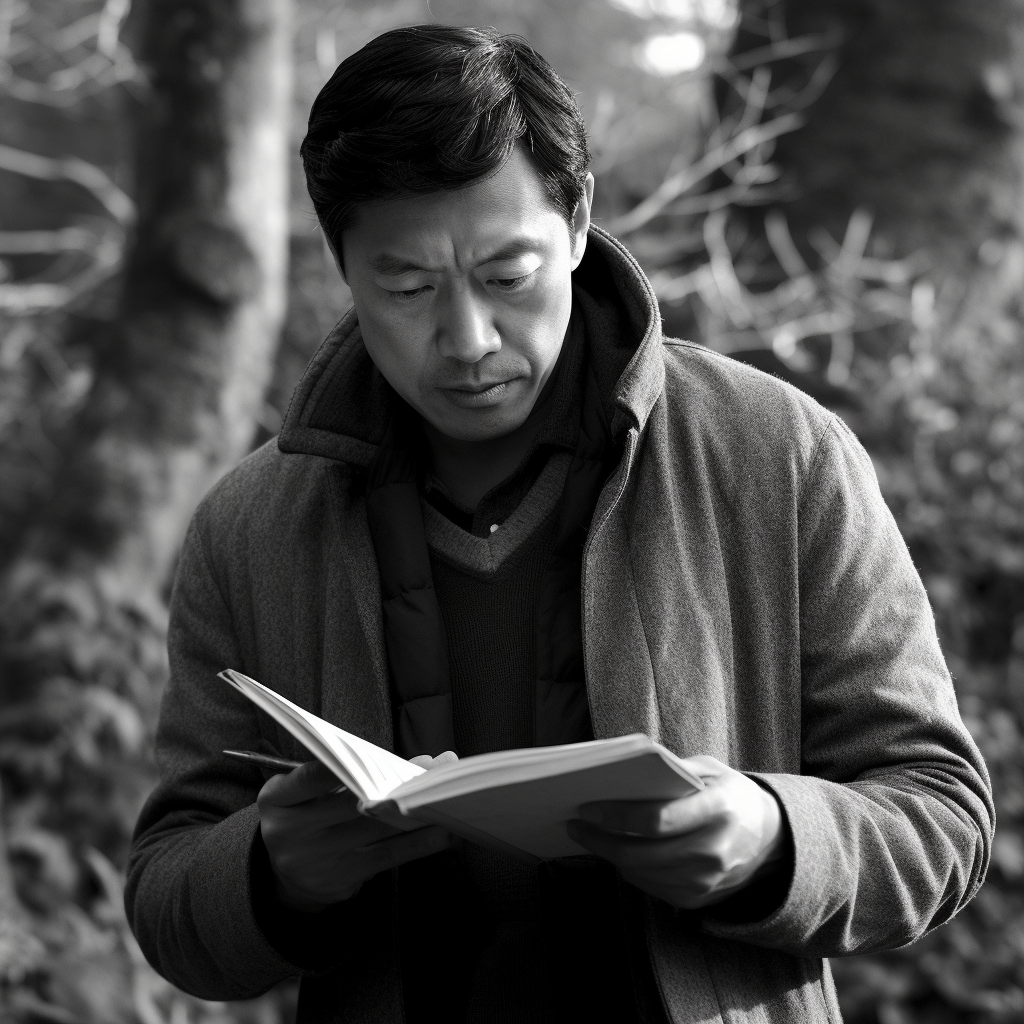I don’t often mourn the death of a business, but this one deserves it.
Its death is also relevant to any of you out there who enjoy reading or those of you who value literature and the written word in any meaningful way, shape, or form.

I discovered Book Depository many years ago when I was just buying books, looking for things that were rare and a little arcane; always patient to wait, I was looking to buy books at a good price and somehow just enjoy the way it felt when my mind was steeped in the written word.
I will always remember how the books would take weeks to arrive, but I will also always remember how each delivery was an event akin to the arrival of royalty in our household, in which each little box was dropped over by at the behest of the delivery-people whose “Oh it’s you again!” faces I came to know all too well as my house filled up with books, books, books!
Sapiens? Behave? Mihaly Csikszentmihalyi’s Flow? The entirety of the Walter Isaacson collection, works of arcane psychology from Freud to Jung to business books and onto the Chronicles of Narnia, the Lord of the Rings, and studies of the greatest literature in the world across Europe, Asia, and planet Earth?
All of these memories came to me in those BD boxes and were accessed the same way – savagely, by tearing those little brown boxes apart, so I could begin reading the treasures within at force.
I read so much, you have no idea.
I read to the point that I ended up on the news in Malaysia.
In that single year, I purchased about 300 books (approximately MYR15000) from Book Depository in the course of a single year alone, but I suppose that that wasn’t enough.
If you haven’t already tried buying books and getting one in hand, I genuinely believe that Book Depository is the single best company that a person can purchase physical books from.
You’ll be able to purchase up until April 26th – after that, it’s khallas, game over, no more Book Depository.
I would have loved to make a post on this blog beforehand to talk about my joy and my love for reading and how I believe genuinely from the bottom of my heart that it is that which makes one of the very biggest differences in the life and ability of a student to create and to write…
But I guess it was too little and too late.
Thanks for the memories and you will be missed, Book Depository; you were a huge part of many years of my life and a company that I will always be appreciative for.
I will remember you as the single company that granted me the master key access to the strange, the arcane, the rare, and the ultimately enlightening moments of reading that have made up a long and epic journey of learning that has continued to this day and will continue in the many years hereafter; you were a major source of learning in my journey to become a better writer and thinker, and I will miss you much.
– V
Hello there! Today, we’re going to introduce you to the wonderful practice of *drumroll* directed writing!
Here’s what that’s all about!
In directed writing…

So why is this directed writing? It’s directed writing because it’s specifically directing you to create a particular type of text – either a discursive/argumentative/persuasive speech, letter, or article.
By the fundamental counting principle, there are a grand total of 9 types of things that you can be asked to do, then.
i) Discursive speech
ii) Discursive letter
iii) Discursive article
iv) Argumentative speech
v) Argumentative letter
vi) Argumentative article
vii) Persuasive speech
viii) Persuasive letter
ix) Persuasive article
But you’re not just going to write these essays offhand!
Have a look at a sample question below, from Summer 2021, Paper 2, Variant 3.
Question 1
Write a speech to give to an audience of young people suggesting how they can make changes
effectively in their lives.
In your speech you should:
• evaluate the views given in both texts about making resolutions
• give advice, based on what you have read, about how young people might manage the
changes they want to make in their lives.
Base your speech on what you have read in both texts, but be careful to use your own words.
Address both of the bullet points.
Write about 250 to 350 words.
Up to 15 marks are available for the content of your answer, and up to 25 marks for the
quality of your writing.
Oh fun!
As you can see, the question is asking you to write a speech. Moreover, it is asking you to make a speech to young people – how incredible! What a privilege you have in front of you to influence the next generation!
…Does this mean that you can go ahead and tell people that they should all go on TikTok and achieve their dreams by doing the magic bomb dance?
See:
…Unfortunately no, because the text is also asking you to evaluate the views in both texts about making resolutions, and it is asking you to give advice, based on what you have read, about how young people might manage the changes they want to make in their lives.
That is very specific, and you can’t go against that, but there is plenty of excellence that you can achieve!
Well, how do we do that? We have to read the text! Have a look here:
Text A: Anyone up for a New Year challenge?
The article below discusses some strategies for keeping resolutions.
No one seems sure when the idea of making resolutions at the turn of a new year began. The
ancient Babylonians are believed to have celebrated the beginning of a new planting season
by resolving to make changes for the better. The Roman god Janus – the one that looks both
backwards to the past and forwards to the future – inspired citizens to promise improvements in
the coming year. In the modern world, many countries and cultures celebrate their new year with
‘wishes’ rather than resolutions, but social media, perhaps inevitably, has ensured that personal
struggles to exercise more / study harder / eat more healthily / be kinder have become collective
experiences.
Most people will not succeed with challenges for more than a few weeks: willpower is not a talent
that a lucky few are born with, according to some research. Willpower is a skill to be practised.
Frank Ryan, author of ‘Willpower for Dummies’, explains: ‘Our level of willpower fluctuates
according to our motivation in any given situation. Everybody can learn to use their willpower
more effectively.’
To maximise our chances of sticking to resolutions, Ryan says, we should identify our ‘willpower
profile’. ‘Some people are more impulsive than others. That comes down to personality. For
some, scheduling time to reflect on your progress by keeping a diary can be helpful. For others,
signing up for a group where everyone has a common goal can help to strengthen your resolve,
as can sharing even small progress with others.’
Magdalena Bak-Maier, a neuro-scientist and coach, encourages people to make a written plan
which sets specific goals. ‘You might have announced: this year I’m going to write a novel or I’m
going to run a half-marathon, but those are just ideas, not plans. A plan is: I’m going to get up
at 6:30 Monday to Friday and write 500 words of my screenplay before I leave for work. Or I’m
going to sign up for 10 water-colour classes and go every Monday at 18:00.’
Finally, be kind to yourself. ‘Anticipate lapses and plan for them,’ says Ryan. ‘Changing habits,
or establishing new ones, is a motivational marathon, with inevitable trips along the way.’ It’s
important to stay optimistic. ‘Feeling negative and self-critical actually reduces your willpower,’
says Ryan. ‘Negative moods are the enemy of willpower and self-blame is the main culprit.’
Text B
The article below is about some of the benefits of making resolutions.
I like a challenge, and what better way to push myself than at the start of the New Year with
wholly ridiculous resolutions?
One year, I randomly decided I’d practise yoga every day for the following 12 months without
ever having tried yoga before – very ambitious. Last year I promised myself I’d go bouldering
every single Thursday … indefinitely. And of course, for the past two years, I’ve attempted to have
a plant-based diet for the first month of the year knowing I love cheese more than most things in
this life. Needless to say, all my grandiose New Year’s resolutions have been a tremendous flop.
Essentially every year I set myself up for failure. Normally I feel exceptionally guilty about how
much of a slob I’ve become by the end of the year and try to rectify it by attempting resolutions
that are ambitious at best and delusional at worst.
Luckily, I’m not alone with my futile declarations as 80 per cent of New Year’s resolutions fail
within weeks. I lasted 27 days the first time I attempted a plant-based diet – all it took was one
encounter with a margherita pizza and all my hard work was undone 4 short days before the
end of the challenge. And when it came to bouldering, I got a (not so cheap) 10-day pass to a
climbing centre, and let’s just say a year later there’s still about four visiting passes left to use.
Yes, my resolutions never go to plan, but they have taught me a wealth of new, sometimes
pointless, skills. I’m often too hard on myself and forget all the days I did actually stick to my
challenges and what I’d gained from them. I lasted 27 whole days as a vegan yet I was more
upset about the four days that I didn’t manage. I stuck at it the next time though, learning from my
mistakes.
The fully vegan diet didn’t stick but I now know how to realistically work more plant-based meals
into my diet rather than going cold turkey (excuse the pun) and spending a whole month in near
starvation. And I didn’t do yoga every day, because that’s ridiculous, but I did practise it daily for
the first few months and continued on and off long after that – it truly made me feel stronger and
happier in myself. I definitely don’t go climbing as often as I’d like to but the point is I still go when
I can.
Being realistic in my expectations is where I really fail every year. Daily challenges, massive
changes to my diet and physical activity can’t just happen overnight.
Okay, so here’s how you do well on this.
Let’s start.
- Understand the question:
Before you start writing, read the question carefully and understand what you are being asked to do. Look for specific details, such as the audience, purpose, and format of the writing. Keep these in mind throughout your writing process and make sure to refer back to the question time and time again as you write.
The reality is that many students actually lose track of the writing prompt as time goes by, and thereby become unable to write coherent or correct responses – not just because they don’t understand what the prompt was in the first place, but often because they just lost track after a while! - Plan your response:
To ensure that your writing is well-organized and coherent, create a brief outline or plan before you begin. This can include jotting down the main points you want to cover and the order in which you want to present them. Planning will help you maintain a clear focus and avoid straying off-topic. - Use the appropriate format and register:
IGCSE directed writing tasks may come in various formats, such as letters, articles, reports, or speeches. Be familiar with the conventions of each format and adhere to them in your writing. Moreover, consider the register (formal or informal) required by the task and ensure your language, tone, and style match the intended audience and purpose. - Develop strong arguments:
Make sure to develop strong and relevant arguments to support your ideas. Use a combination of facts, examples, and personal experiences to make your arguments persuasive and engaging. - Use varied sentence structures and vocabulary:
To achieve a high mark, demonstrate a wide range of vocabulary and sentence structures. This will not only make your writing more engaging but also showcase your linguistic abilities. Avoid using clichés, jargon, or overly complex language that may confuse your reader. - Maintain coherence and cohesion:
Ensure that your writing flows smoothly from one point to another by using appropriate linking words and phrases, such as ‘however,’ ‘in addition,’ ‘on the other hand,’ etc. This will help create a coherent and cohesive piece of writing that is easy to follow and understand. - Proofread and edit:
Once you have finished writing, take the time to proofread and edit your work. Check for spelling, grammar, and punctuation errors, and make sure your writing is clear and concise. Don’t be afraid to make changes if necessary. - Practice and seek feedback:
The more you practice, the better you will become at directed writing. Try completing past IGCSE directed writing tasks and ask your teachers, peers, or tutors for feedback. This will help you identify areas for improvement and gain valuable insights on how to enhance your writing.
We will update this post a little later with an example directed writing sample, written to the prompt but we hope that you’ve enjoyed this piece so far!
Look forward to it!
Welcome to the best Narrative Composition Bank for the IGCSE First Language English exam on the internet.
Some of the essays were written by students who are working with me or have worked with me in the past, students who would like to contribute their essays for grading, and each essay is graded by a teacher and moderated as well 🙂
Generally, a site membership (free or premium) is required for you to view this Composition essay bank. Still, please feel free to view the samples below!
2024
October/November
Variant 1
Variant 2
May/June
Variant 1
Variant 2
2023
October/November
Variant 1
Variant 2
May/June
Variant 1
Variant 2
2022
October/November
Variant 1
Variant 2
May/June
Variant 2
2021 and beyond:
October/November
Variant 1
Variant 2
May/June
Variant 1
Variant 2
- Write a story with the title, ‘The invitation’.
- Write a story which includes the words, ‘… nothing seemed to go right …’.
Variant 3
- Write a narrative which includes the words, ‘… I thought I had the solution …’.
- Write a narrative which involves having to follow a map.
Samples
2020
Prompt: Write a story with the title, ‘An unexpected meeting’
Essay:
The sun was setting, casting a golden hue upon the quiet forest. Emily, a young photographer, was engrossed in capturing the fleeting moment on her camera. As she moved deeper into the woods, searching for that perfect angle, she stumbled upon an ancient oak tree, its bark weathered with time.
Suddenly, an unexpected gust of wind blew through the trees, sending a shiver down Emily’s spine. The forest seemed to whisper a secret, one that felt almost tangible. Following her instincts, she pressed her ear against the oak and listened carefully.
To her surprise, the oak revealed a hidden door. It creaked open, revealing a dimly lit chamber within. As Emily stepped inside, she felt a strange sense of nostalgia, as if she had been here before. The walls were adorned with portraits of faces she recognized – her ancestors.
In that moment, time seemed to bend around them, and Emily found herself transported to a sunlit meadow, her great-grandfather by her side. He shared stories of their family history, tales filled with love, loss, and adventure. Emily felt a profound connection with the man who had been lost to her, but who now felt closer than ever.
As the sun dipped below the horizon, William’s voice softened, and he shared one final tale – a warning about a family curse that had brought tragedy to each generation. He entrusted Emily with the task of breaking the curse, arming her with the knowledge she would need to face it.
As they said their goodbyes, Emily felt a surge of determination. She would honor her great-grandfather’s memory and protect her family. With newfound purpose, she stepped back through the hidden door, ready to confront her destiny.
Comment:
This essay demonstrates excellence in content and structure (W1 and W2) by presenting a complex, engaging, and effective narrative with a strong plot that includes elements of fiction writing such as description, character development, and a climax. The descriptions, such as “a golden hue upon the quiet forest” and “the oak revealed a hidden door,” create vivid imagery that invests readers in the story.
The style and accuracy (W3, W4, and W5) are also strong, with precise, well-chosen vocabulary like “weathered,” “tangible,” and “nostalgia.” Varied sentence structures are chosen for effect, and the register is consistent and suitable for the context. The grammar, spelling, and punctuation are almost always accurate.
One phrase that could be improved is “his eyes piercing the darkness with their intensity.” A possible revision might be “his eyes cutting through the darkness, radiating intensity.” This change strengthens the imagery and enhances the overall emotional impact.
The structure of the essay is effective, with a gradual buildup of suspense leading to the climax and resolution. To further improve, the writer could study the works of renowned authors like Neil Gaiman, whose ability to create immersive worlds and engaging characters could inspire the writer to add depth to their own storytelling.
Mark awarded for content and structure = 15/16
Mark awarded for style and accuracy = 23/24
Total mark = 38/40
Prompt: Write a story with the title, ‘An unexpected meeting’
Essay:
The drizzling rain created an ethereal mist that enveloped the city like a forgotten dream. As Sarah strolled through the dimly lit streets, her thoughts wandered to the recent events that had left her heart heavy with sorrow. The air was damp, and the scent of petrichor hung heavily in the air, reflecting her melancholic mood. The once familiar town seemed alien to her now, as if it were a distant memory she could no longer grasp.
She found herself standing in front of an old, decrepit bookstore, its sagging shelves barely supporting the weight of the dusty tomes that lined them. The welcoming aroma of old paper and ink beckoned her inside, and she obliged, seeking refuge from the relentless drizzle outside. A solitary light illuminated the store, casting shadows that danced in the dark corners like wayward spirits.
As she meandered through the narrow aisles, her fingers trailed along the worn spines of the books, each one whispering a story that yearned to be told. Suddenly, her hand stopped on a particular volume, its frayed leather binding standing out from the rest. A sense of déjà vu washed over her, and she felt inexplicably drawn to it.
She pulled it from the shelf, and as she did, an old photograph slipped out from between its pages. It was a picture of her and a man she had once loved, now faded and yellowed with age. The sight of it brought back memories that had long been buried beneath the sands of time, and her heart ached with longing.
Just then, she felt a presence behind her. She turned around and found herself face-to-face with the very man from the photograph, his eyes filled with warmth and recognition. The years had etched new lines on his face, but the essence of him remained unchanged.
Their eyes locked, and for a moment, time stood still. The weight of the past dissolved, leaving only the tender resonance of shared memories. In that unexpected meeting, amidst the hallowed sanctuary of the forgotten bookstore, they found solace in one another’s presence, the tides of fate having brought them together once more.
Comment:
The essay effectively utilizes vivid descriptions and a well-defined plot (W1) to create a story that is emotionally impactful. The narrative builds up to an effective climax (W2) with the unexpected meeting between Sarah and the man from her past. The language employed is complex and engaging, with phrases such as “ethereal mist” and “yearned to be told” capturing the reader’s attention and contributing to the emotional impact (W3).
The essay demonstrates a consistent register suitable for the context (W4) and maintains accurate spelling, punctuation, and grammar throughout (W5). One area for improvement is the transition between the introduction and the setting of the bookstore, which could be made smoother to enhance the story’s structure.
The writer might consider studying the works of Haruki Murakami, who expertly employs vivid imagery and emotional depth in his narratives, providing valuable inspiration for refining the writer’s own storytelling abilities.
Mark awarded for content and structure = 16/16
Mark awarded for style and accuracy = 24/24
Total marks awarded = 40/40
One of the key skills on the IGCSE First Language English exam is learning how to write a summary.
Summary-writing is examined in question 1f), and an example question from Summer 2022, Paper 1, Variant 3, is provided here for your consideration:

The format is generally always the same.
In each case, you have to refer to text B in the insert, and then you have to respond to a specific prompt with a summary.
But how do you do that?
To effectively write a summary for IGCSE First Language English and obtain the highest possible score in an exam, follow these steps:
- Read the task prompt:
You have no idea how many summaries I have read in my lifetime that didn’t work because the student just went and summarized the text. Please don’t do this – instead, please read the task prompt.
No matter what, your summary needs to match the question, and you need to make sure that it addresses the essential points. This is crucial, because the summary task is about selection. It will be crucial when you decide on what you will select for your points.
- Read the passage carefully:
Begin by thoroughly reading the given passage to fully understand its content, context, and main ideas. This will ensure you have a strong foundation for your summary. As you read, make sure you keep #1 in mind – it will help you decide what you should focus on. - Identify key points:
As you read, make note of the main points and any supporting details. Pay special attention to the question or task prompt, as it will guide you on what to include in your summary. - Organize your ideas:
Once you’ve managed to decide which points belong in your summary, group the main points and supporting details in a logical order that supports the prompt. This will help you create a coherent and well-structured summary. - Paraphrase:
When summarizing the text, use your own words to express the ideas. Often, you will need to, as the passages won’t always *directly* demonstrate the requirements of the prompt, and you may need to progress a little further. Paraphrasing shows your understanding of the text and will help you avoid plagiarism. However, be sure to maintain the original meaning of the content. - Keep it concise:
A summary should be brief and to the point. Aim to include only the most important information, and avoid any unnecessary details, examples, or personal opinions. Many English teachers also do advise that you keep your summary to one paragraph and would fight and clash on hills to ensure that somehow or another you keep to one paragraph for your summary. - Use appropriate language:
In the IGCSE First Language English exam, use formal and clear language. Avoid slang, contractions, and colloquialisms. Vary your sentence structure and use appropriate vocabulary to demonstrate your language skills, while at the same time making sure that your grammar is impeccable and on point. - Review the task prompt:
As you write your summary, continually refer back to the task prompt to ensure you’re addressing all requirements. This will help you stay focused and avoid straying from the task at hand. - Edit and proofread:
Once you’ve written your summary, take the time to carefully review and edit it. Check for clarity, coherence, and conciseness. Look for any errors in grammar, punctuation, or spelling, and correct them as needed. In all probability, you will want to be able to learn how to do this quickly and precisely over time – to succeed at doing that, you will need to practice and develop your time allocation skills over time.
Oh wait, what’s that? The last tip? - Practice:
To improve your summary writing skills and increase your chances of achieving the highest possible score, practice summarizing various types of texts. This will help you become more familiar with the process and develop your ability to quickly and effectively summarize content.
And that’s it for now!
We hope you enjoyed this piece – enjoy, and have a wonderful one ahead!
V.

Victor Tan
Your ultimate resource for First Language English mastery!
Welcome to FirstLanguageEnglish.net! You've found the best IGCSE 0500 First Language English resource on the internet.
The site updates a minimum of once a week, on Tuesdays and Fridays by 5pm MYT.
If you are interested in sample essays, office hours, video content, and many others, consider enjoying our premium membership tier for much, much more!
This is a passion project that I created because I realized that there is huge variability in the quality of instruction across different schools for IGCSE 0500 First Language English, and I thought to do something about it.
It incorporates insights from teachers, examiners, and actual documentation from Cambridge International Examinations to create a resource that I've tried to make fun, simple, and enjoyable for all of you from beginners to language lovers alike 🙂
Thank you for stopping by, and we're honored to have you here! Hope that the site is helpful to you in many different ways - do share it with your friends, children, and teachers as well!
If you'd like to learn more about me, feel free to head on to www.victor-tan.com, or to contact me at victortanws@gmail.com.
If you'd like to support my work, feel free to buy me a coffee so I can keep creating more awesome content for you all!
Cheers and here is to your smashing successes ahead!


